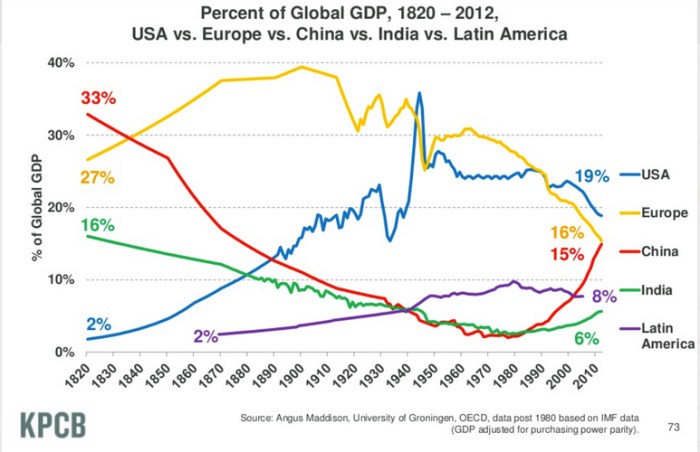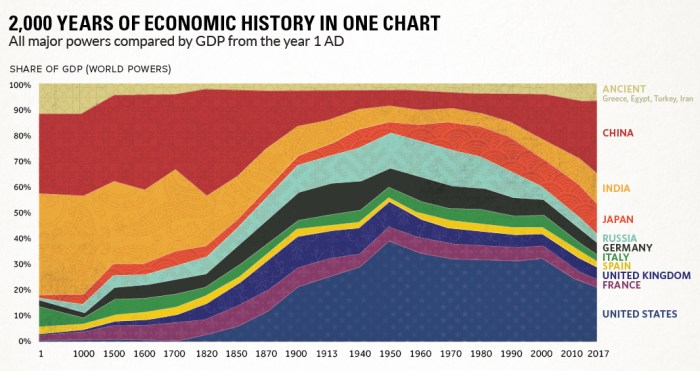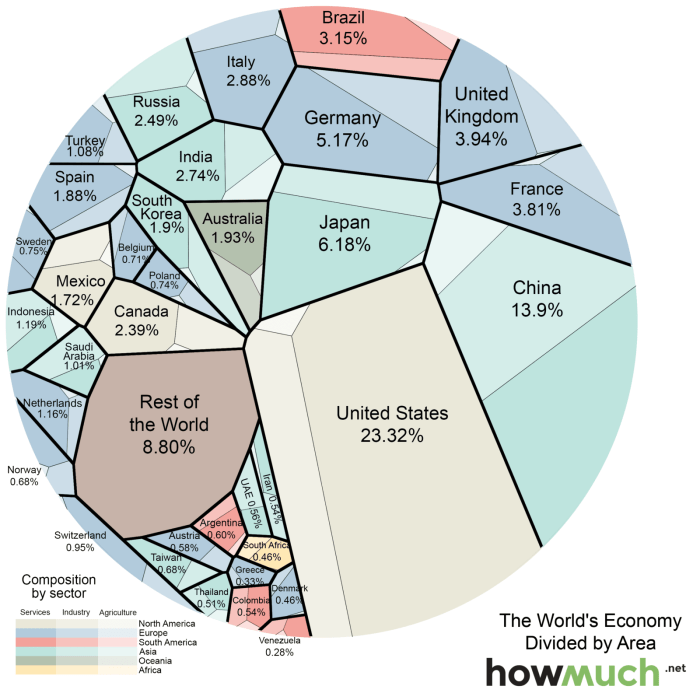Changes in the global economy from 1900 to present – Changes in the global economy from 1900 to the present have been profound and far-reaching, shaping the world we live in today. This narrative delves into the major economic revolutions, globalization, financial markets, government policies, labor markets, and environmental sustainability that have transformed the global economy over the past century.
From the technological advancements of the Industrial Revolution to the interconnectedness of the modern globalized world, the global economy has undergone a series of transformations that have had a significant impact on production, consumption, trade, and economic growth.
Economic Revolutions

Technological advancements have transformed the global economy. The First Industrial Revolution (1760-1840) introduced steam power and mechanization, increasing productivity and urbanization. The Second Industrial Revolution (1870-1914) brought electricity, the internal combustion engine, and mass production, further boosting economic growth. The Third Industrial Revolution (1960-1980) saw the rise of computers, automation, and the internet, leading to the digital age.
Major Technological Advancements
* Steam engine (First Industrial Revolution): Revolutionized transportation and manufacturing
Electricity (Second Industrial Revolution)
Enabled new industries, such as manufacturing and lighting
Internal combustion engine (Second Industrial Revolution)
Facilitated the development of automobiles and aviation
Computers (Third Industrial Revolution)
Transformed information processing, communication, and automation
Internet (Third Industrial Revolution)
Connected the world, enabling global trade and communication
Impact on Production, Consumption, and Trade Patterns
* Increased production: Technological advancements led to higher output and lower costs
Changed consumption patterns
New technologies introduced new products and services
Globalized trade
Transportation and communication advancements facilitated international trade
Affected Industries
* Manufacturing: Automation and computers led to increased productivity and reduced labor costs
Transportation
Steam engines and internal combustion engines revolutionized land and air travel
Communication
The internet and computers enabled instant global communication
Globalization and Trade

Globalization has led to increased economic interdependence among countries.
Evolution of Global Trade, Changes in the global economy from 1900 to present
* Mercantilism (16th-19th centuries): Focus on national wealth and power through trade
Free trade (19th-early 20th centuries)
Reduced tariffs and trade barriers
Protectionism (early 20th century)
Policies to protect domestic industries from foreign competition
Neoliberalism (1980s-present)
Reduced government intervention and increased free trade
Impact on Economic Growth
* Increased trade volume: Globalization expanded markets for goods and services
Increased competition
Forced businesses to become more efficient and innovative
Foreign direct investment
Enabled companies to invest in new markets and technologies
Impact on Inequality and Labor Markets
* Income inequality: Globalization can lead to increased income inequality between countries and within countries
Job losses
Some industries face job losses due to outsourcing and automation
New job creation
Globalization also creates new jobs in sectors such as services and technology
Challenges and Opportunities of Increased Cross-Border Trade
* Challenges: Trade imbalances, environmental concerns, labor exploitation
Opportunities
Increased economic growth, access to new markets, cultural exchange
Financial Markets and Institutions: Changes In The Global Economy From 1900 To Present

Financial markets facilitate investment and capital formation.
Development of Financial Markets
* Stock markets: Allow companies to raise capital by issuing shares
Bond markets
Allow governments and companies to borrow money by issuing bonds
Derivatives markets
Provide risk management tools for investors
Role of Financial Markets
* Capital formation: Financial markets enable businesses to raise capital for investment and expansion
Economic growth
Investment leads to increased productivity and innovation
Risk management
Derivatives markets allow investors to manage risk and protect their investments
Impact of Financial Crises and Regulations
* Financial crises: Can lead to economic downturns and loss of confidence in financial markets
Regulations
Aim to prevent financial crises and protect investors
FAQ Overview
What were the major economic revolutions that transformed the global economy?
The major economic revolutions included the Industrial Revolution, the Technological Revolution, and the Digital Revolution.
How has globalization impacted economic growth and inequality?
Globalization has led to increased economic growth but has also contributed to rising inequality between countries and within countries.
What is the role of financial markets in facilitating economic growth?
Financial markets play a crucial role in facilitating investment, capital formation, and economic growth by providing a platform for businesses to raise capital and investors to allocate their savings.